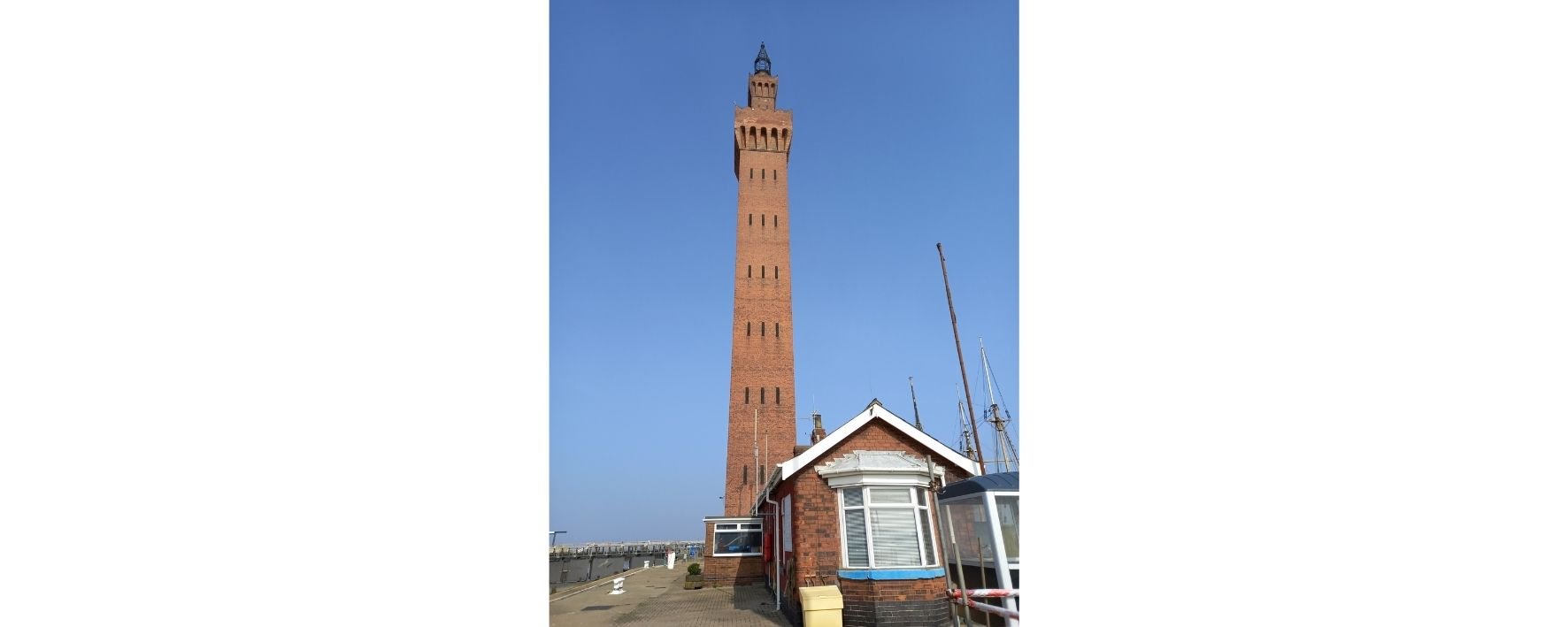The Dock Tower completed on 27 March 1852.
The port of Grimsby’s landmark Dock Tower celebrates 170 years on Sunday 27 March.
To ensure she lasts more years, some routine maintenance work is being carried out this spring before it can be reopened. Standing 309 feet (94.2m) tall, the tower was completed in 1852 to power the hydraulic machinery of Grimsby docks. Its height was to achieve the sufficient pressure needed to operate the machines.
Designed by James Wild, it was based on the Torre del Mangia on the Palazzo Pubblico in Siena. It was built by James Meadows Rendel, the civil engineer who constructed the docks at Grimsby between 1844 and 1853, and ‘opened’ by Queen Victoria and her husband Prince Albert.
Simon Bird, Regional Director for ABP Humber, said: “The Dock Tower is an icon in the landscape and the jewel in the port of Grimsby. It has been a beacon to so many over the years and for Grimbarians it is a symbol of home. As its custodians we have over the years spent time and money maintaining it, as it has such architectural historic value, and will be here for many more years to come.”
Since the Covid-19 pandemic began in 2020, the Grade 1 listed tower has been closed to everyone interested in visiting it. The planned maintenance works include the replacement of floorboards at the first level. Regular inspections are carried out on the building, led by ABP’s project team and in 2016 major brickwork repairs were carried out at the top.
These days drones are used to do visual inspections on the listed building, which allows the engineers to check the mortar and brickwork. Weathering is one of the factors the building is affected by, but the work in 2016 saw lime mortar replaced where needed and new bricks inserted. The bricks were sourced from other similar aged buildings on the port.
Its construction in 1852 saw approximately one million bricks being used whose clay was excavated from the marsh adjoining the dock. The foundation of the tower is a solid masonry wall built upon a timber bearer piling. The legend is that it was built upon a bale of wool, but it is reference to the Lincolnshire Longwool export trade which helped fund the port.
The Dock Tower continued to provide water for hydraulic working until 1892 when the erection of the hydraulic accumulator tower on the opposite pier approximately 70 yards to the northwest of the Dock Tower took over. Present dock and lock machinery are powered by electric or electro-hydraulic energy.
The ground floor of the tower was lined with pink, white and blue drapery when Queen Victoria visited the dock in October 1854. Her Majesty gave permission for Prince Albert, the Prince of Wales, and the Princess Royal to accompany James Rendell in the hydraulic lift to the gallery running around the tower above the water tank. The lift is no longer in operation with access to the top via a spiral staircase.
It is hoped to have charitable fundraising activities and tours up and running by 2023.


